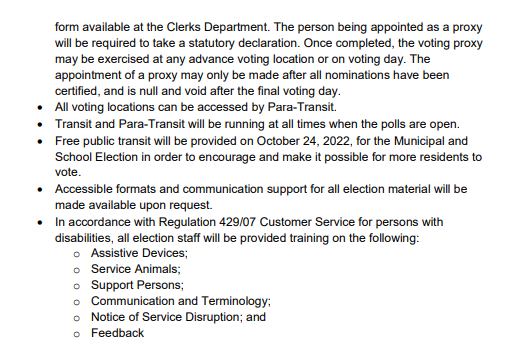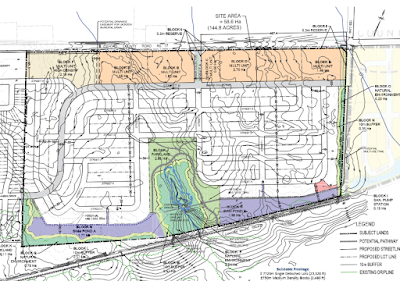Mt. Elgin plans to add 200+ homes over the next few years
By Mark Schadenberg
Oxford County has some of the best farmland in the province
and proof is seen in soil testing results, crop yields and real estate prices.
I’m not going to discuss loam types and percentages of sand versus silt, or
Class 1 through 7, and then compare it to the Holland Marsh near Bradford as I’m
not a horticultural / agricultural specialist.
This entry deals with where municipalities ‘might’ be given
permission to expand their ‘settlement boundary’ into current farmland.
I watched last night’s Oxford County Council meeting with great
interest (I viewed the video so I could rewind when needed.) as a proposal for
a large subdivision was discussed with maps and lots and streets, and lots of
numbers. It was a public meeting section of the county agenda, so there was
permission granted to delegations to speak against the plan as well. In this
particular case, this new residential area was not on the horizon for
Woodstock, Ingersoll or Tillsonburg. The GSP Group was in attendance to
describe a 230-unit subdivision and zoning change for the community of . . . Mt.
Elgin in Southwest Oxford township with a forecast of 166 single detached homes
and then several townhouses.
You can watch the County Council video of the meeting where
Cath Kindree and Heather Thomas of Mt Elgin speak against the idea based on
several reasons – utilizing great farmland, creating more homes in a village which
lacks dentists and shopping (etc), and over-taxing what they describe as a large
septic system in place for municipal servicing. I can add that as a former
Realtor I have seen these buried buckets in the front yard in Mt. Elgin which
collect waste (brown water), so at best this is a modified or certainly unconventional
waste water system. The proposal on the desk at the county did include an
expansion of this unorthodox sewer system.
As is mentioned in the delegation speeches, the area’s
Reynolds Creek is part of the Upper Thames River Conservation Authority
watershed. I’m on the UTRCA board and know about aquifers, water quality and existing
habitat.
Included with this writing is a series of 4 Twitter entries
by Zorra Township mayor Marcus Ryan. However, at the county council meeting he
voted in favour of the zoning change.
Ingersoll mayor Ted Comiskey suggested that the ministry of
environment should analyze how well the current septic program is working as it
was approved in 2006, and determine if it will still be effective if system capacity
is expanded when adding more homes.
The motion for a zone change to permit the subdivision
passed with 3 voting against – Tait, Lauder and Comiskey.
I’m running to be re-elected to Woodstock City Council as a
city-only member, but earlier this year I most certainly deliberated the thought
of running for the more expanded City – County role for many reasons and
allowing more residential living in smaller serviced villages is among my
issues of concerns (Others include the multi-dimensional multi-faceted county human
services department operations, the county amassing vast reserves for concepts
such as a new landfill not required until at least 2050, county roads inside municipalities,
snow removal, and other areas where the county somehow wants to expand its
reach for offering services such as bus transit).
Woodstock, Ingersoll and Tillsonburg are the residential bases
in Oxford County, but other communities do have defined ‘settlement boundaries’
which can be expanded because they have municipal services such as water and
waste-water. Therefore, I can understand if Norwich, Thamesford and Tavistock (and
even Beachville, Otterville and Drumbo) seek additional residential areas because
they have (limited) lifestyle amenities such as employment, groceries, restaurants,
medical offices, etc. In my mind, centres such as Mt. Elgin, Innerkip, Embro, Princeton,
Bright and Plattsville should be discouraged to expand like a flow of lava into
farmland with homes because residents of those hamlets must commute for work
and shopping – thus creating emissions.
I do often refer to the Provincial Policy Statement 2020 as it elaborates on all land uses around the province, including farming, commercial and aggregates, and also the fact Oxford County is NOT in the so-called Golden Horseshoe.
I submit these personal thoughts only to prove again how
over-lapping every issue can be if it is simply under the human eye – and dissected
under a microscope.





















.png)


.png)

.png)























